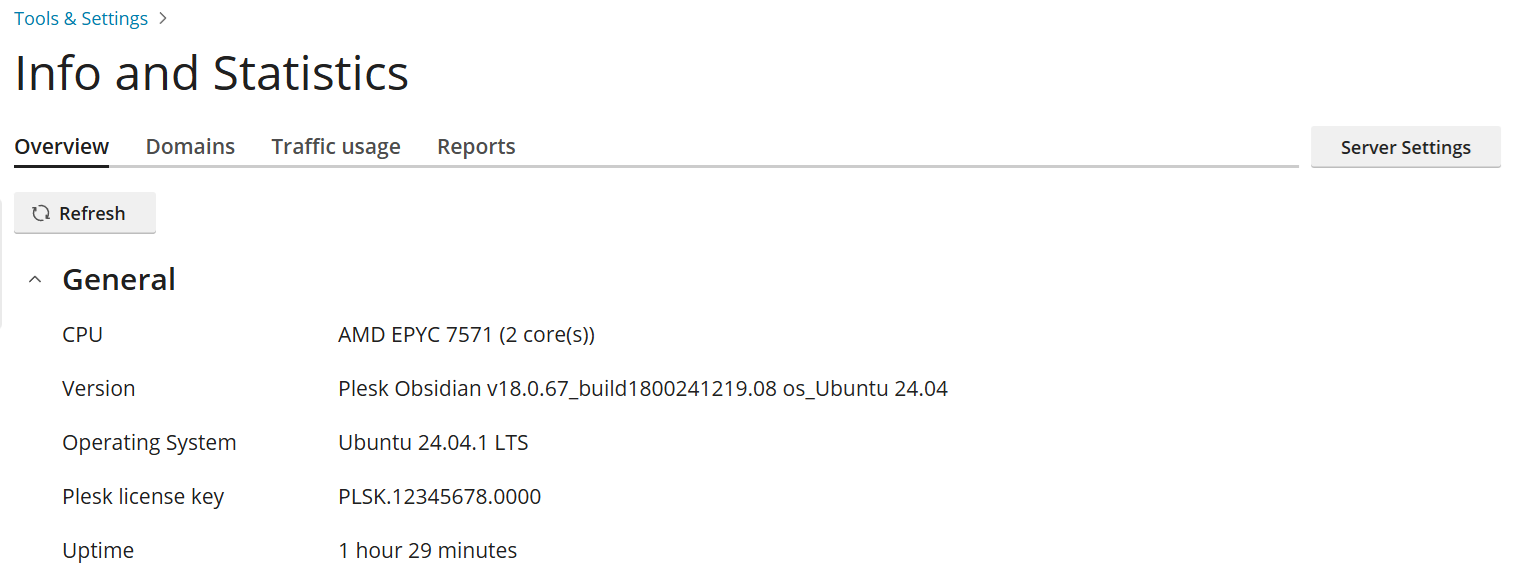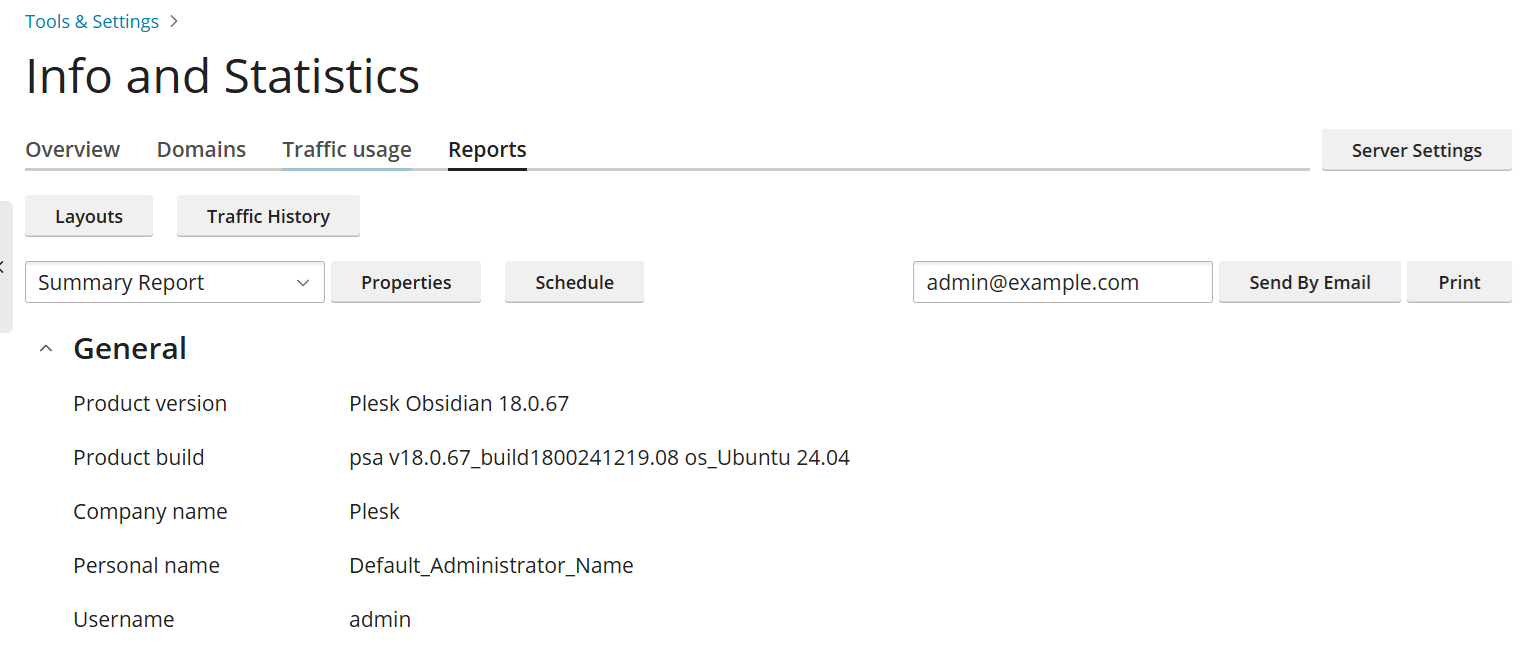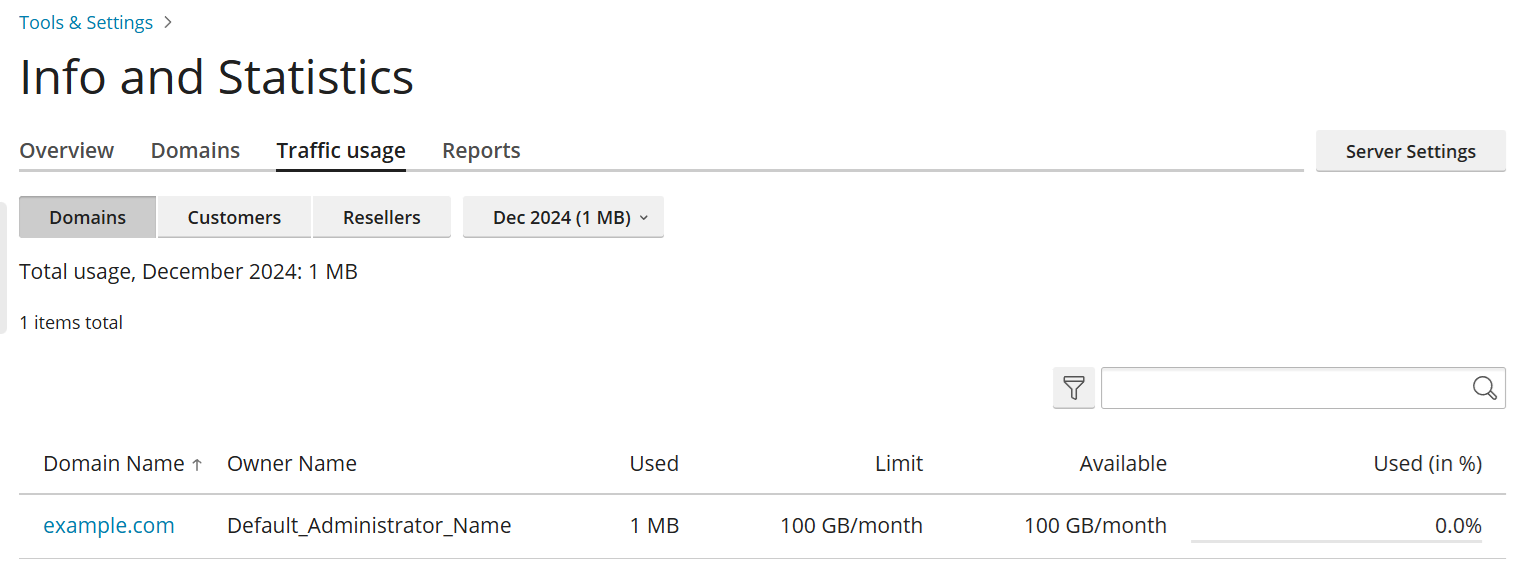查看統計資料
概要: To better understand how server resources are used, you can access a variety of server information and statistical data (such as memory or traffic usage) right from the Plesk interface.
Learning about the current server resources』 usage
To learn about current CPU, RAM, swap, and disk space usage, visit the Server Information page. There, you can also see the number of domains hosted on the server that are 「active」 (domains that are online), 「problems」 (domains that are online, but have exceeded their disk space and/or bandwidth limits), and 「inactive」 (domains that are offline due to being suspended).

To learn about the current server resource usage:
-
Go to Tools & Settings > Server Information (under 「Server Management」).
-
(Optional) Click Refresh to load the most up-to-date information.
備註: Up-to-date information is loaded every time you open this page. Clicking Refresh is only useful if the page has been open for a while, or if you are closely monitoring server resource usage.
Learning about disk space and traffic usage
To learn the number of resellers and customers on the server (both active and inactive), and also how much disk space and traffic is used in total by all domains hosted on the server, visit the Summary Report page.

To learn about disk space and traffic usage:
- Go to Tools & Settings > Summary Report (under 「Statistics」).
- (Optional) To see a different report, select the desired report template from the drop-down menu.
Reports are generated from templates, which determine the level of detail in a report. By default, two reports templates are available, 「Summary」 and 「Full」. You can create, remove, and customize report templates.
To customize a report template:
- Go to Tools & Settings > Summary Report (under 「Statistics」).
- Select the report you want to customize from the drop-down menu.
- Click Properties, make the desired changes, and then click Save.
To create a report template:
- Go to Tools & Settings > Summary Report (under 「Statistics」).
- Click Layouts, and then click the
icon.
- Name and customize the report template, and then click Save.
To remove a report template:
- Go to Tools & Settings > Summary Report (under 「Statistics」).
- Click Layouts, select the checkbox next to the report template you want to remove, and then click Remove.
For your reference, you can print a report out or send it via email. You can also set up automatic delivery of reports.
To print a report:
- Go to Tools & Settings > Summary Report (under 「Statistics」).
- (Optional) To see a different report, select the desired report template from the drop-down menu.
- Click Print. The report formatted for printing will open in a separate browser window.
- Select the File > Print option from your browser’s menu to print the report.
To send a report by email:
- Go to Tools & Settings > Summary Report (under 「Statistics」).
- (Optional) To see a different report, select the desired report template from the drop-down menu.
- (Optional) Enter the desired email address. By default, the administrator’s email address is used.
- Click Send By Email.
To have reports automatically generated and delivered by email:
- Go to Tools & Settings > Summary Report (under 「Statistics」).
- (Optional) To see a different report, select the desired report template from the drop-down menu.
- Click Schedule and follow the instructions in the Automating Report Generation and Delivery by Email topic.
On this page, you can also see how much traffic was used on the server during any particular month.
To learn about traffic usage for a particular month:
- Go to Tools & Settings > Summary Report (under 「Statistics」).
- Click Traffic History.
Learning about traffic usage by domains, customers, and resellers
To learn how much traffic was used by a particular domain, customer, or reseller during a particular month, visit the Traffic Usage By Domains, Traffic Usage By Customers, or Traffic Usage By Resellers page, respectively.
To learn about traffic usage by domains, customers, or resellers:
-
Go to Tools & Settings > Traffic Usage By Domains, Traffic Usage By Customers, or Traffic Usage By Resellers (under 「Statistics」).
